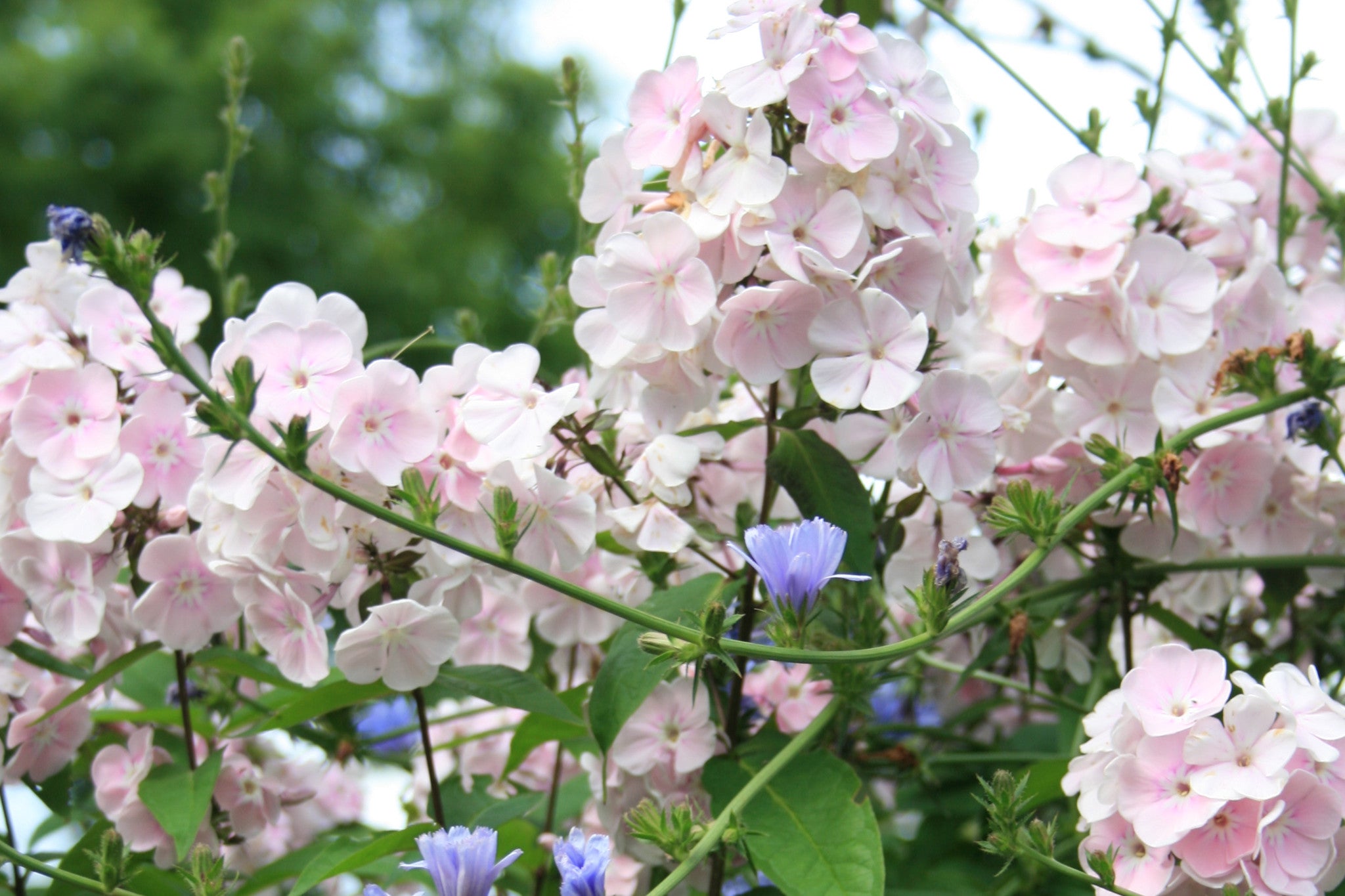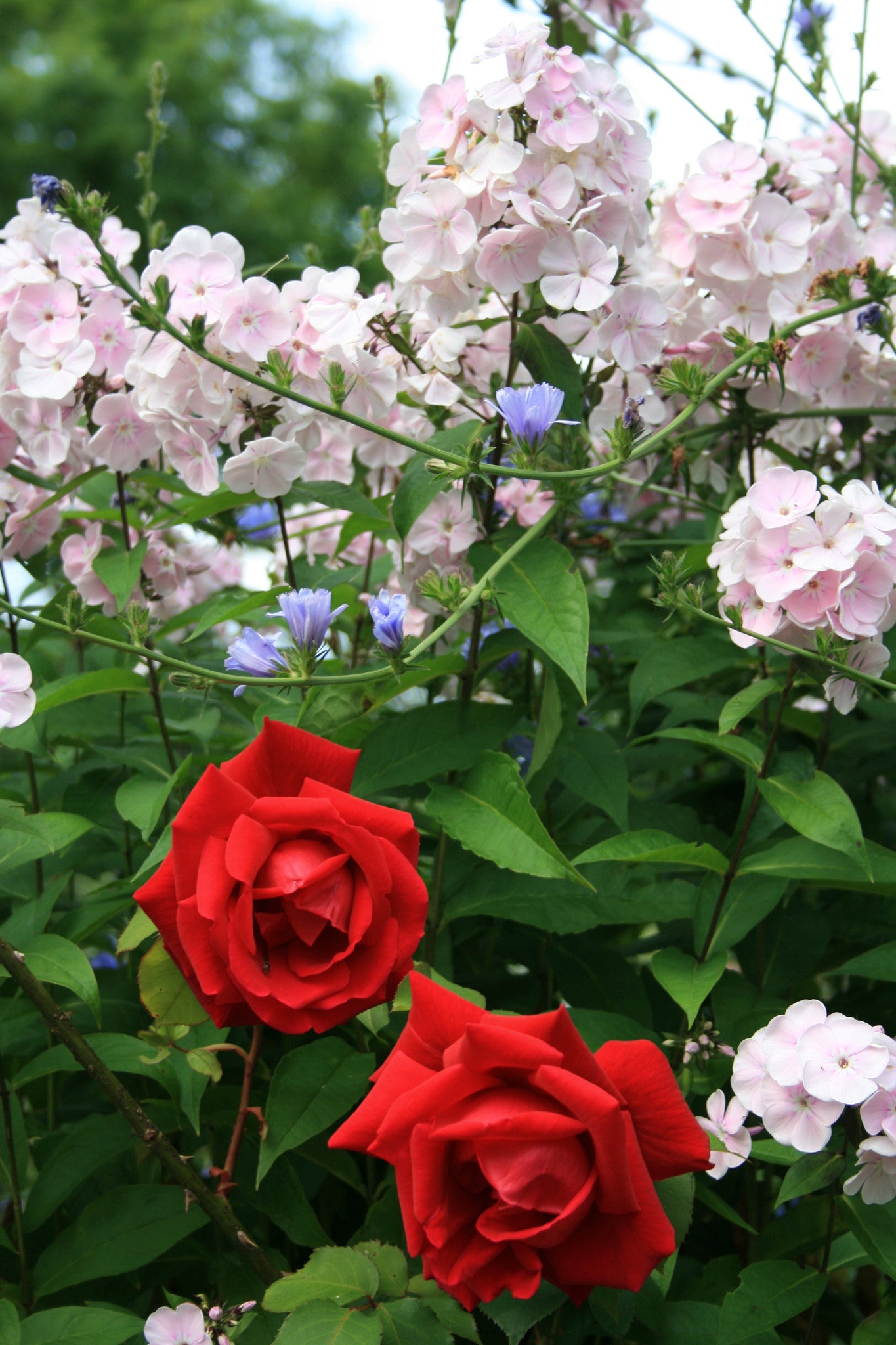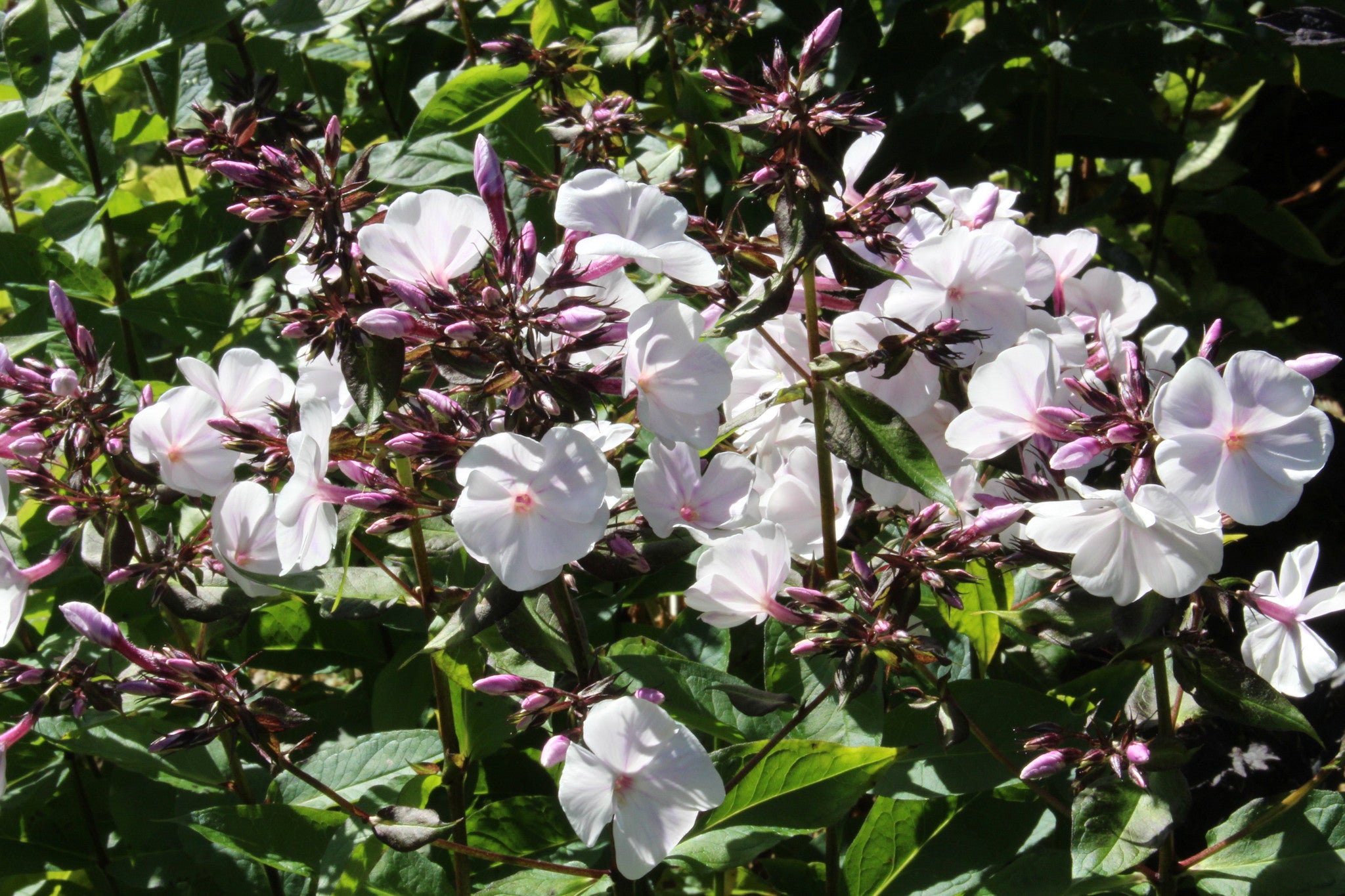Phlox paniculata 'Monica Lynden-Bell'
Approx. 0.5 litre pot
About this cultivar:
Phlox paniculata 'Monica Lynden-Bell' was named in the Seventies after the Hampshire gardener who discovered the seedling in her own garden. What about it? ask Val Bourne; You couldn't pick a better phlox– it's vigorous, easy to grow, long-lived and healthy. The pale pink flowers have a silver sheen that contrasts well against the dark, almost black buds. The foliage has emerald green tints with dark flecking and the stems are equally dark, so it stands out well in a border.
- Position: Full sun, partial shade
- Soil: Almost any soil, grows well in Ballyrobert
- Flowers: July, August, September
- Other features: Bees and Butterflies
- Hardiness: Fully hardy, grows well in Ballyrobert
- Habit: Clump forming, Columnar or Upright
- Foliage: Deciduous
- Height: 60 - 90 cm (2 - 3 ft)
- Spread: 30 - 60 cm (1 - 2 ft)
- Time to full growth: 2 to 5 years
- Plant type: Herbaceous Perennial
- Colour: Green, pink, white
- Goes well with: Many - but we love Roses, Grasses, and Astilbe
About this genus:
Phlox gets its name from the Greek for flame. It is a genus of 67 species of perennial and annual plants in the Jacob's Ladder family (Polemoniaceae). They are found mostly in North America (one in Siberia) in diverse habitats from alpine tundra to open woodland and prairie. Some flower in spring, others in summer and autumn. Flowers may be pale blue, violet, pink, bright red, or white. Many are fragrant. Some species such as P. paniculata (Garden Phlox) grow upright, while others such as P. subulata (Moss Phlox, Moss Pink, Mountain Phlox) grow short and matlike. A variable genus!
All the Phlox we have to sell, like all our plants, have been grown and trialed in our own garden. We've found them to be unfussy - full sun to part shade and almost any non-waterlogged soil should be fine.
Combinations are many - but we love Roses, Grasses, and Astilbe.






